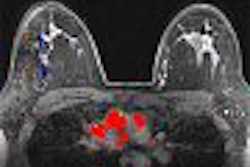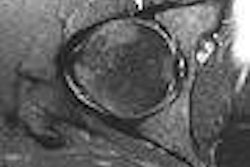I hope that the recent rise in MRI suite safety awareness is not simply cyclic, like the tide in superslow motion -- falling for a couple of years, then rising again. It's my hope that the current gentle swell isn't a crest that is about to recede again, but rather just the development of a broad concern for the speed and direction that MRI patient safety is headed.
MRI utilization is up roughly 50% in the past four years and, as all the vendors and journals boast, new applications for MRI are expected to follow breast MRI's lead, just one CPT code away from success. MR spectroscopy, MR-guided focused ultrasound, MR-guided angioplasty, and untold others are stretching the clinical bounds of MRI, broadening the potential patient base and, ultimately, sustaining MRI's growth in the years ahead.
And at the same time that MRI applications grow further and further beyond ambulatory "walkie-talkie" patients, magnet strengths are following the same path as gigahertz in computer processors or slices in CT scanners, doubling every generation.
The previous generations of open MRIs were roughly a third of a tesla in strength, but the new high-field open MRIs are two to three times that strength. Five years ago 3-tesla systems were for advanced research only; today they're appearing in both hospital and outpatient facilities everywhere. Many of today's whole-body research systems are 7-tesla in strength. Should we expect to see those in clinical settings in five to 10 years?
So when we combine these two factors -- dramatic growth in utilization coupled with increasing magnet strength -- we multiply the risk factors. If we simply grew the number of ambulatory MRI patients on existing systems, we could expect the increase in the rate of accidents and near misses to follow a straight line. But we're not doing that. We're sedating more patients, taking biopsies from more patients, imaging the infirm in greater numbers, and we're doing this on more and more magnets of greater and greater strengths. Without appropriate safety interventions to mitigate the risks, these are the ingredients for accelerating the growth in patient injury.
Without a doubt, MRI is a very safe procedure, but even slight increases in the risk factors multiplied over 10,000 MRIs and millions of scans annually will result in more accidents. Unfortunately, MRI injury accidents do occur regularly, though the vast majority escape any regulatory oversight or reporting, and are cloaked in out-of-court settlements and nondisclosure agreements. The concealment of these accidents serves to reinforce an artificial sense of security within the industry.
While MRI's track record on accidents is clouded over, the direction in which these market changes are pushing aren't. Without an increase in the application of known safety improvements, it doesn't take a rocket scientist to recognize an impending increase in MRI patient injuries.
The bittersweet truth is that there are protocols, products, and designs available today to mitigate most MRI patient safety risks. It's a bittersweet truth because, despite their widespread availability, these tools aren't universally applied -- even to new MRI suites.
So when the next MRI patient injury story breaks through the phalanx of attorneys and onto CNN, many will be scratching their heads wondering how it could possibly have happened. Others will continue to believe that, despite any similarities with their own situation, an accident could never happen at their facility. However, many will recognize that "there but for the grace of God go I," and that the accidents are often the result of momentary lapses in attention without any backup systems.
Hopefully it won't take another MRI death for hospitals and imaging centers to warmly embrace the American College of Radiology's four-zone principles, thorough clinical screenings, rigorous access controls, patient gowning, or ferromagnetic detection. Because if there is another high-profile accident, MRI may feel the bridle of state-imposed regulations for the first time.
We must rededicate ourselves to uncovering an accurate picture of the patient safety risks and hazards presented at our facilities, and work to develop and implement the strategies that will protect our patients, our equipment, and our revenue.
By Tobias Gilk
AuntMinnie.com contributing writer
March 9, 2006
Reprinted from www.mri-planning.com by permission of the authors. If you would like more information on any aspect of MR facility design or safety, please contact Robert Junk or Tobias Gilk at Jünk Architects.
Related Reading
Ten questions patients should ask their MRI provider: Is this real or is it hype? February 15, 2006
MRI and cancer diagnosis, January 6, 2006
MRI vendor suite templates: What they don't show, December 8, 2005
Hitting the ceiling over HIPAA-required walls, December 6, 2005
Burying MRI construction mistakes: What you cannot see affects what you can, November 23, 2005
Copyright © 2006 Jünk Architects, PC


.fFmgij6Hin.png?auto=compress%2Cformat&fit=crop&h=100&q=70&w=100)





.fFmgij6Hin.png?auto=compress%2Cformat&fit=crop&h=167&q=70&w=250)











